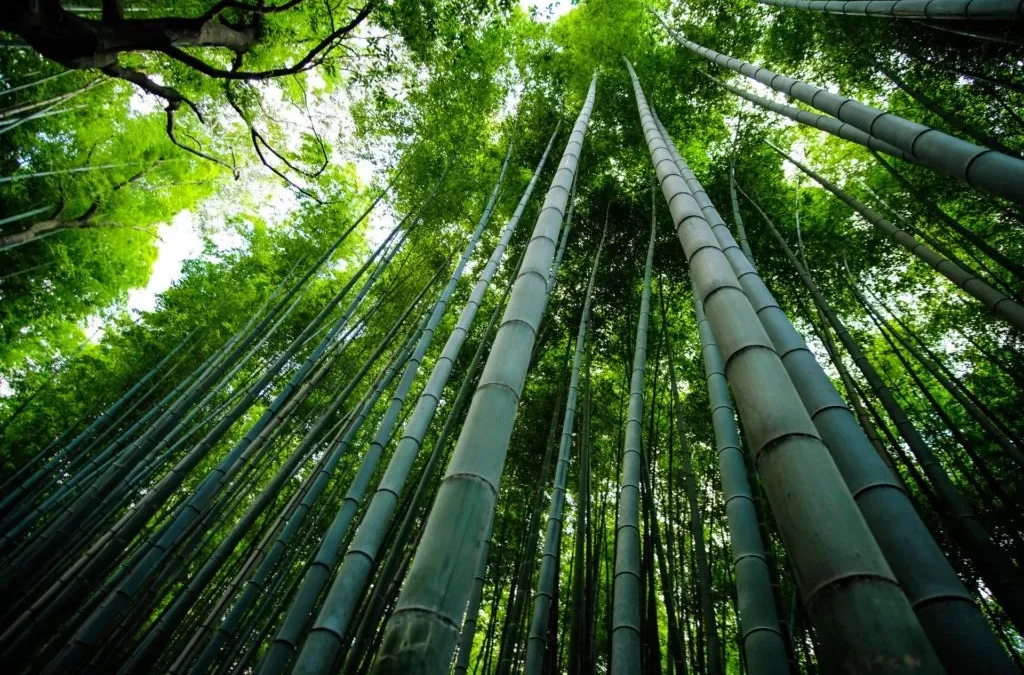In a world where everyone is eco-conscious and wants to do their best for the environment, innumerable recyclable materials are increasingly being used. It is an effort to make the world a greener, better place. Consequently, everything from iron and steel scrap to wood and aluminum cans is recycled for a less toxic environment.
Similarly, a vast range of bamboo products is being used across the world. Manufacturers are creating an array of bamboo products, from sustainable bamboo rugs and floor to bamboo walls and kitchen utensils. And the demand for these products seems only to be increasing.
What is bamboo?
Bamboo is among the quickest growing grass plants in the world. It can be found in plenty in East Asia, India, South America, Japan, Central America, northern Australia, and South Africa. It holds immense cultural and economic significance in many of these areas, being used as a food source and building material, among other things.
With a tree-like structure, bamboo has over a thousand different species, each with its unique characteristics. Although the stems of bamboo are hollow, they are extremely strong. So, unsurprisingly, most of these bamboo species get stronger with age.
What makes it sustainable and eco-friendly?
Bamboo is an eco-friendly construction material in countries worldwide such as Nigeria, China, India, and others. Following are some remarkable characteristics of bamboo that prove it is among the most sustainable natural resources ever.
- Bamboo is resistant to different weather conditions and is more robust than oak, giving it immense durability.
- When compared to other hardwood trees, bamboo releases approximately 35% more oxygen into the air.
- Bamboo can grow in places where water is scarce.
- It is one of the remarkably rare plants that can be cultivated without any chemicals or fertilizers. And although you may find pandas enjoying bamboo as a food source, most bugs and insects stay away from it.
- Few species of bamboo can grow up to a remarkable height of about three feet every day. Unsurprisingly, one species of bamboo has established its place in the Guinness Book of World Record as the fastest growing plant in the world.
- In several regions of the world, bamboo is planted along the riverbanks to prevent soil erosion effectively.
Popular bamboo products
You may have heard of commonly available bamboo mats, bowls, and accessories, among other things. But the usage of bamboo to make newer, more diverse products is still ongoing as there is an extensive scope of what one can do with this versatile natural material. Below are some great uses of bamboo worldwide.
- Bridges and roads
In several parts of countries such as China and India, the locals use bamboo as a practical road reinforcement. They build pathways and bridges strong enough to withstand the weight of heavy vehicles such as trucks and buses.
- Buildings
Scores of people across the world live in bamboo houses. UNESCO claims that around 70 hectares of bamboo production are enough to make approximately a thousand houses. Bamboo is also used to make schools and other small buildings in several parts of the world. With this new culture of work from home and binge-watching nights, the bamboo house is a top-notch choice.
- Scaffolding
In countries such as Honk Kong, bamboo scaffolding is preferred over metal ones. This is mainly because it is a cost-effective solution and extremely strong at the same time. It enables workers to have a steady grip and footing while working on building complex structures.
- Rugs and other textiles
Sustainable bamboo rugs and other textiles are fire, insect, and allergen resistant. Also, they are naturally anti-static as bamboo does not conduct electron charges. The rugs and textiles are incredibly strong and durable, fit to use in any part of the house. They are available in a vast variety of designs, colors, sizes, and shapes. The edges of the rugs typically have a cotton binding and the rugs themselves can be stained by any color.
- Food
You will find bamboo shoots as an ingredient in several Asian dishes. These edible bamboo shoots are highly nutritious, being rich in vitamins, carbohydrates, and amino acids. The Japanese use bamboo as an effective preservative owing to its antioxidant properties. It helps prevent bacterial growth and keeps food items fresh for longer.
- Medicines
In China, officials are testing black bamboo shoots to help deal with kidney diseases, cancer, and venereal illnesses. A small village in Indonesia reportedly uses the water from bamboo’s side branches to treat bone diseases.
Conclusion
Besides the above uses, bamboo is also used worldwide to make clothing, furniture items such as chairs and tables, paper, and tableware. Moreover, Japan and China have been using charcoal from bamboo for numerous centuries to make cooking fuel.
This kind of versatility has made bamboo increasingly popular across developed nations as well. More people are now taking note of how using sustainable and recyclable materials such as bamboo can help preserve the environment.
Jordan Avery
Related posts
Stay connected
Today's pick
- Things to Remember While Designing Your Custom Modular Kitchen in GurgaonGurgaon now known as Gurugram is the second largest city in the state of Haryana and is a reflectiossn of an ideal modern city with futuristic goals. Witnessing rapid urbanization, it has also emerged as a hub for contemporary homes, with homeowners seeking innovative and... The post Things to Remember While Designing Your Custom Modular […]


